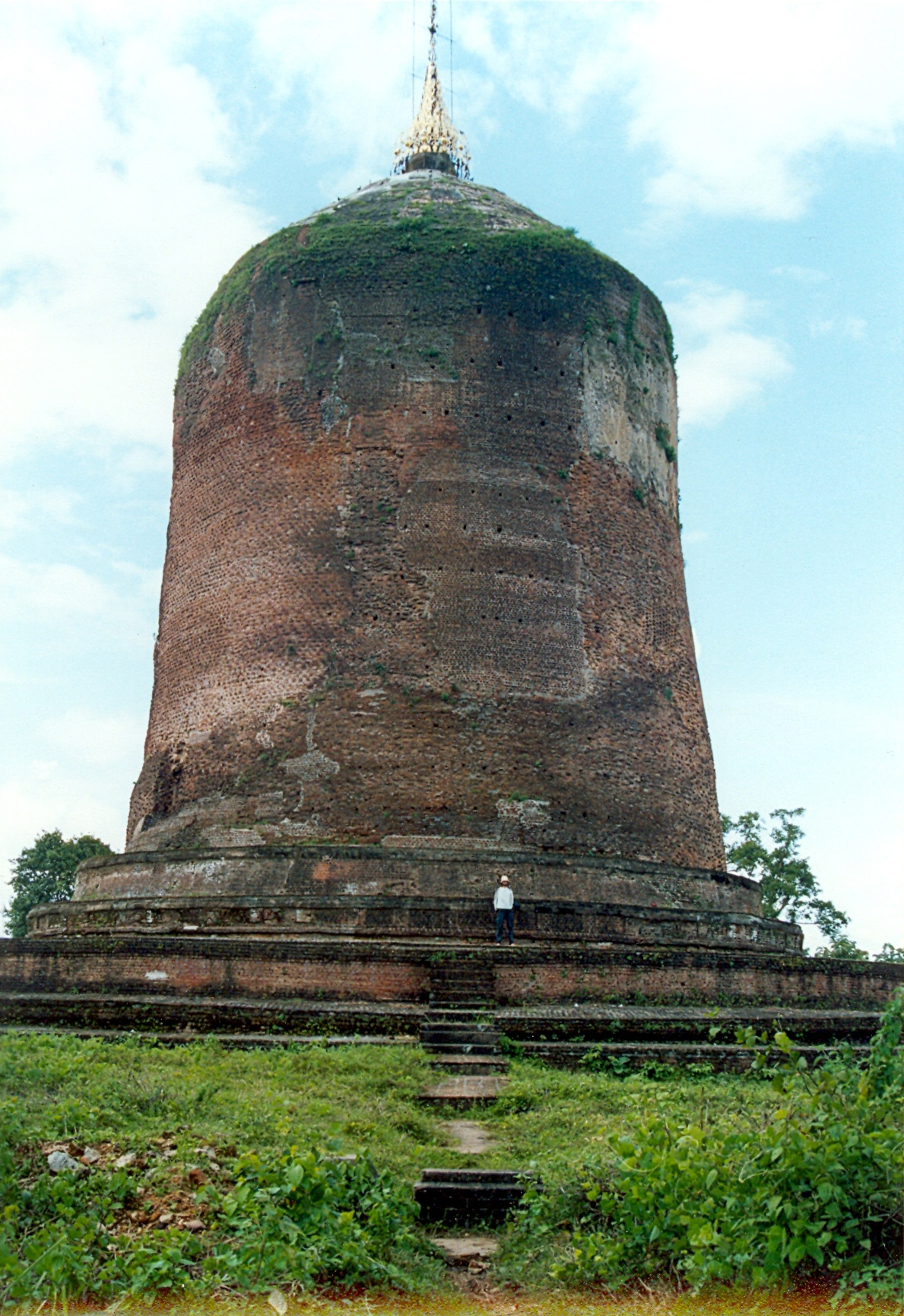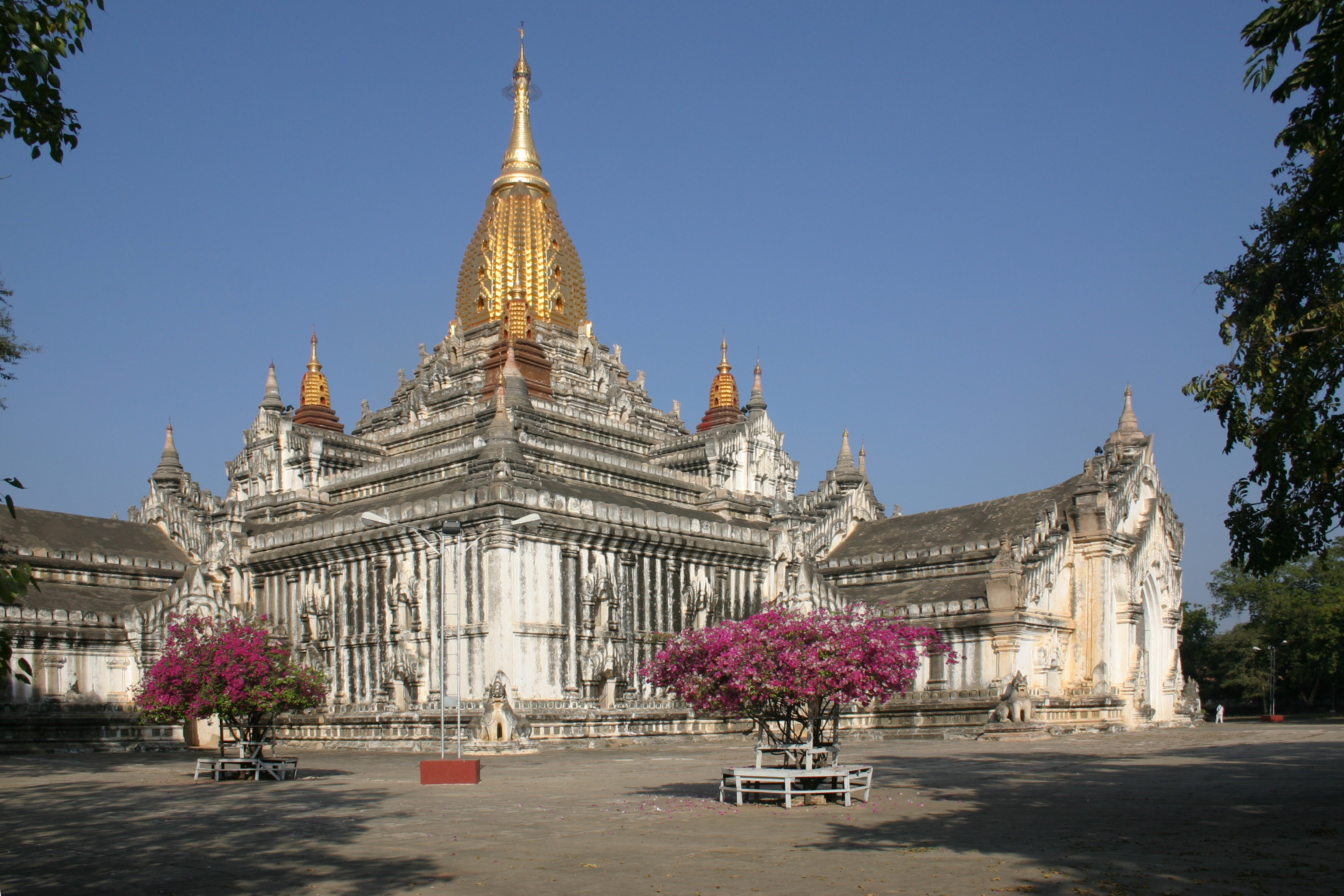Burmese pagoda on:
[Wikipedia]
[Google]
[Amazon]
 Burmese pagodas are stupas that typically house Buddhist relics, including
Burmese pagodas are stupas that typically house Buddhist relics, including

 In the
In the
Myanmar Pagoda Image from YahooBurmese Pagoda from Google
{{Religion in Myanmar Buddhist buildings
 Burmese pagodas are stupas that typically house Buddhist relics, including
Burmese pagodas are stupas that typically house Buddhist relics, including relics associated with Buddha
According to the '' Mahāparinibbāṇa Sutta'' ( Sutta 16 of the '' Dīgha Nikāya''), after attaining ''parinirvana'', the body of Buddha was cremated and the ashes divided among his lay followers.
Division of the relics
According to the '' ...
. Pagodas feature prominently in Myanmar
Myanmar, ; UK pronunciations: US pronunciations incl. . Note: Wikipedia's IPA conventions require indicating /r/ even in British English although only some British English speakers pronounce r at the end of syllables. As John Wells explai ...
's landscape, earning the country the moniker "land of pagodas." According to 2016 statistics compiled by the State Sangha Maha Nayaka Committee
The State Saṅgha Mahā Nāyaka Committee ( my, နိုင်ငံတော် သံဃာ့မဟာနာယကအဖွဲ့, abbreviated Mahana or in Burmese, SSMNC in English) is a government-appointed body of high-ranking Buddhis ...
, Myanmar is home to 1,479 pagodas exceeding in height, a quarter of which are located in Sagaing Region
Sagaing Region ( my, စစ်ကိုင်းတိုင်းဒေသကြီး, ; formerly Sagaing Division) is an administrative region of Myanmar, located in the north-western part of the country between latitude 21° 30' north and lon ...
. Several cities in the country, including Mandalay and Bagan, are known for their abundance of pagodas. Pagodas are the site of seasonal pagoda festivals.
Burmese pagodas are enclosed in a compound known as the ''aran'' (အာရာမ်, from Pali ''ārāma''), with gateways called ''mok'' (မုခ်, from Pali ''mukha'') at the four cardinal directions. The platform surrounding a Burmese pagoda is called a ''yinbyin'' (ရင်ပြင်).
Terms
 In the
In the Burmese language
Burmese ( my, မြန်မာဘာသာ, MLCTS: ''mranmabhasa'', IPA: ) is a Sino-Tibetan language spoken in Myanmar (also known as Burma), where it is an official language, lingua franca, and the native language of the Burmans, the coun ...
, pagodas are known by a number of various terms. The umbrella term ''phaya'' (, pronounced ), which derives from Sanskrit
Sanskrit (; attributively , ; nominally , , ) is a classical language belonging to the Indo-Aryan branch of the Indo-European languages. It arose in South Asia after its predecessor languages had diffused there from the northwest in the late ...
''vara'', refers to pagodas, images of the Buddha, as well as royal and religious personages, including the Buddha, kings, and monks. ''Zedi'' (စေတီ), which derives from Pali
Pali () is a Middle Indo-Aryan liturgical language native to the Indian subcontinent. It is widely studied because it is the language of the Buddhist ''Pāli Canon'' or '' Tipiṭaka'' as well as the sacred language of '' Theravāda'' Buddh ...
''cetiya
upright=1.25, Phra Pathom Chedi, one of the biggest Chedis in Thailand; in Thai, the term Chedi (cetiya) is used interchangeably with the term Stupa
Cetiya, "reminders" or "memorials" (Sanskrit ''caitya''), are objects and places used by Buddhi ...
'', specifically refers to typically solid, bell-shaped stupas that may house relics. ''Pahto'' (ပုထိုး) refers to hollow square or rectangular buildings built to resemble caves, with chambers that house images of the Buddha. Burmese pagodas are distinguished from ''kyaungs'' in that the latter are monasteries that house Buddhist monks.
Types
Burmese zedis are classified into four prevalent types: # ''Datu zedi'' (ဓာတုစေတီ, from Pali ''dhātucetiya'') or ''datdaw zedi'' (ဓာတ်တော်စေတီ) - zedis enshrining relics of the Buddha orarhat
In Buddhism, an ''arhat'' (Sanskrit: अर्हत्) or ''arahant'' (Pali: अरहन्त्, 𑀅𑀭𑀳𑀦𑁆𑀢𑁆) is one who has gained insight into the true nature of existence and has achieved ''Nirvana'' and liberated ...
s
# ''Paribawga zedi'' (ပရိဘောဂစေတီ, from Pali ''paribhogacetiya'') - zedis enshrining garments and other items (alms bowls, robes, etc.) that belonged to the Buddha or sacred personages
# ''Dhamma zedi'' (ဓမ္မစေတီ, from Pali ''dhammacetiya'') - zedis enshrining sacred texts and manuscripts, along with jewels and precious metals
# ''Odeiktha zedi'' (ဥဒ္ဒိဿစေတီ, from Pali ''uddissacetiya'') - zedis built from motives of piety, containing statues of the Buddha, models of sacred images
Of the four classes, ''dhammazedi''s and ''udeikthazedi''s are the most prevalent, since they are routinely erected by donors as a work of merit
Merit may refer to:
Religion
* Merit (Christianity)
* Merit (Buddhism)
* Punya (Hinduism)
* Imputed righteousness in Reformed Christianity
Companies and brands
* Merit (cigarette), a brand of cigarettes made by Altria
* Merit Energy Company, ...
. Burmese zedis are typically constructed with bricks, covered with whitewashed stucco. Prominent zedis are gilded with gold. Burmese zedis are crowned with a spired final ornament known as the hti, which is hoisted in a traditional ceremony (ထီးတော်တင်ပွဲ, ''htidaw tin pwe'') that dates to the pre-colonial era.
See also
*Buddhism in Burma
Buddhism ( my, ဗုဒ္ဓဘာသာ), specifically Theravāda Buddhism ( my, ထေရဝါဒဗုဒ္ဓဘာသာ), is the State religion of Myanmar since 1961, and practiced by nearly 90% of the population. It is the most rel ...
*Cetiya
upright=1.25, Phra Pathom Chedi, one of the biggest Chedis in Thailand; in Thai, the term Chedi (cetiya) is used interchangeably with the term Stupa
Cetiya, "reminders" or "memorials" (Sanskrit ''caitya''), are objects and places used by Buddhi ...
*Awgatha
An ''Awgatha'' (ဩကာသ; from Pali: ''okāsa''), sometimes known as the ''common Buddhist prayer'' is a formulaic Burmese Buddhist prayer that is recited to initiate acts of Buddhist devotion, including obeisance to the Buddha and Buddhist ...
* Pagoda festival
*Dhamma Talaka Pagoda
Dhamma Talaka Peace Pagoda was opened in Birmingham, UK in 1998 and is the only such building in traditional Burmese style in the Western hemisphere. On its grounds there are now a monastery and the teaching hall of a planned Buddhist Academy.
C ...
, Birmingham UK
*Global Vipassana Pagoda
The Global Vipassana Pagoda is a Meditation dome hall with a capacity to seat around 8,000 Vipassana meditators (the largest such meditation hall in the world) near Gorai, north-west of Mumbai, Maharashtra, India. The pagoda was inaugurated by ...
, Mumbai India
* Golden Pagoda, Arunachal Pradesh India
* Sand pagoda
*Stupas in Sri Lanka
Stupas, also called and cetiyas, are considered an outstanding type of architectural creation of ancient Sri Lanka. Under the influence of Buddhism, there were several changes in the field of architecture in Sri Lanka. The stupa commands a promine ...
*Relics associated with Buddha
According to the '' Mahāparinibbāṇa Sutta'' ( Sutta 16 of the '' Dīgha Nikāya''), after attaining ''parinirvana'', the body of Buddha was cremated and the ashes divided among his lay followers.
Division of the relics
According to the '' ...
References
External links
Myanmar Pagoda Image from Yahoo
{{Religion in Myanmar Buddhist buildings